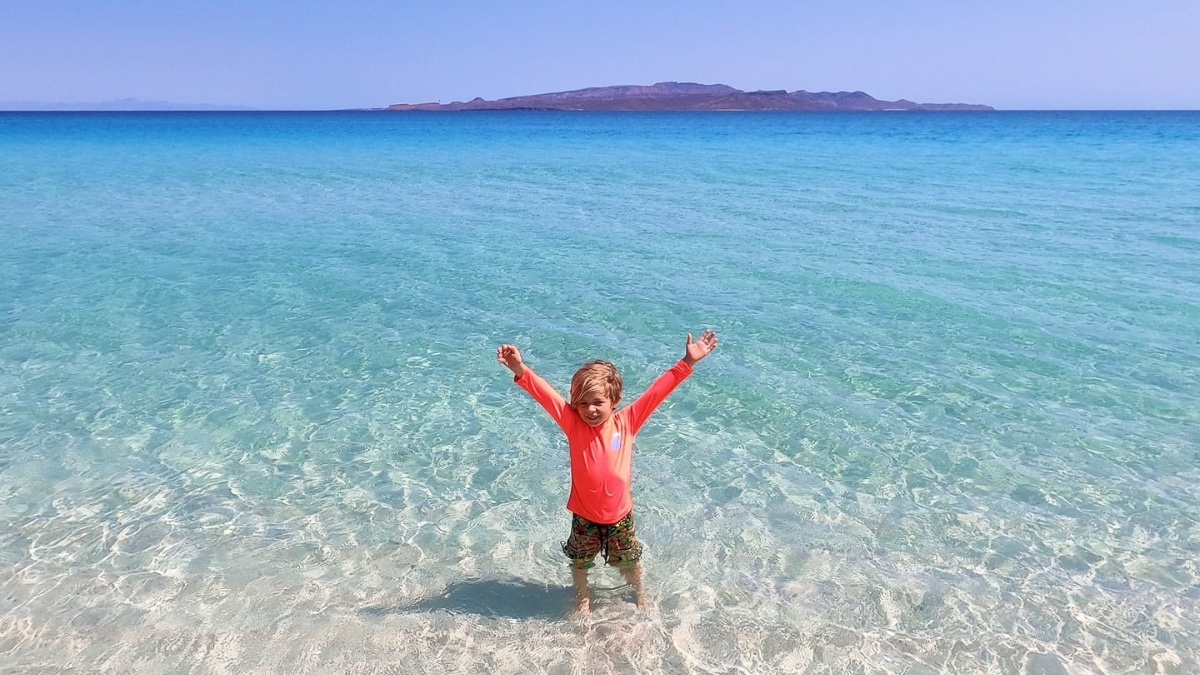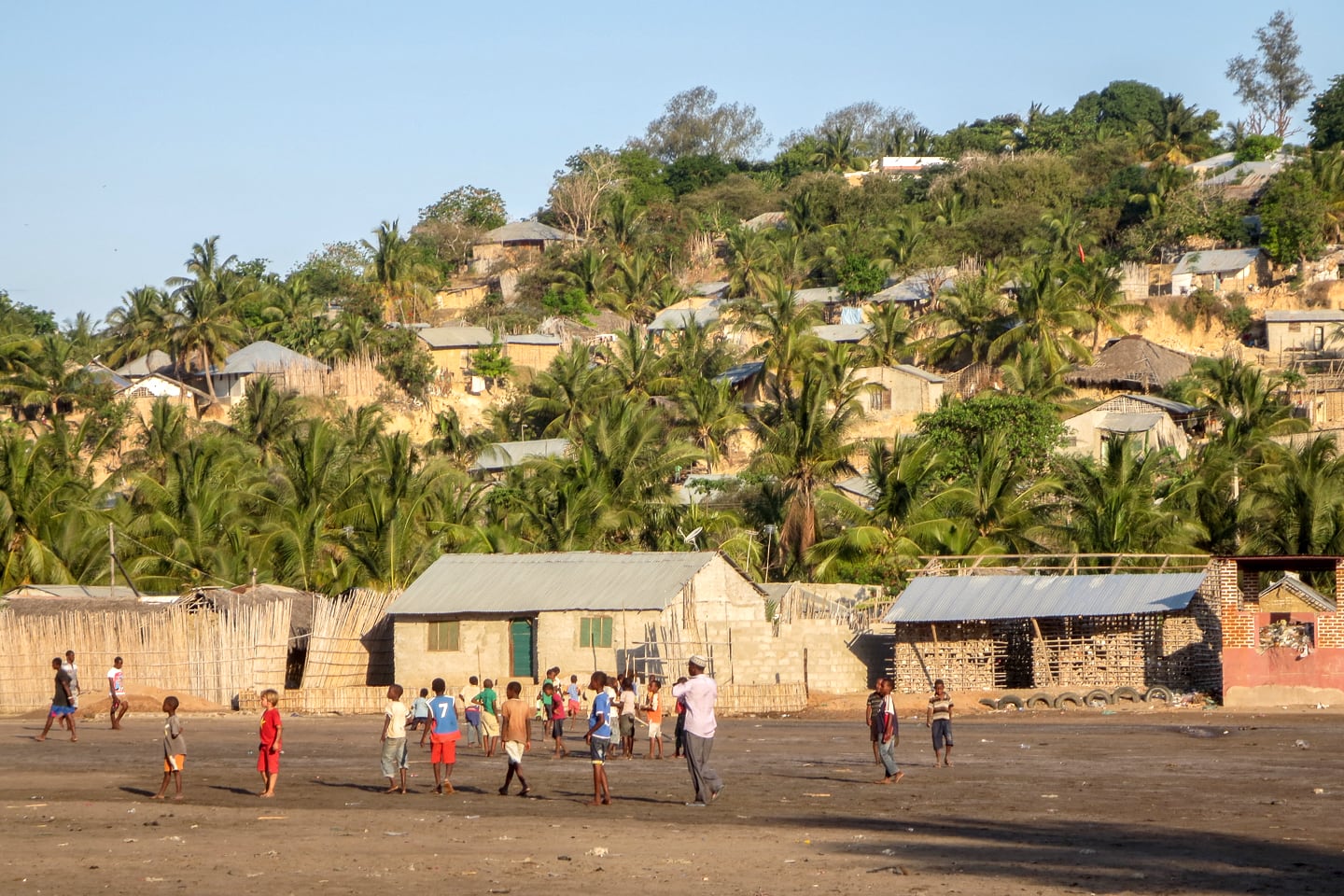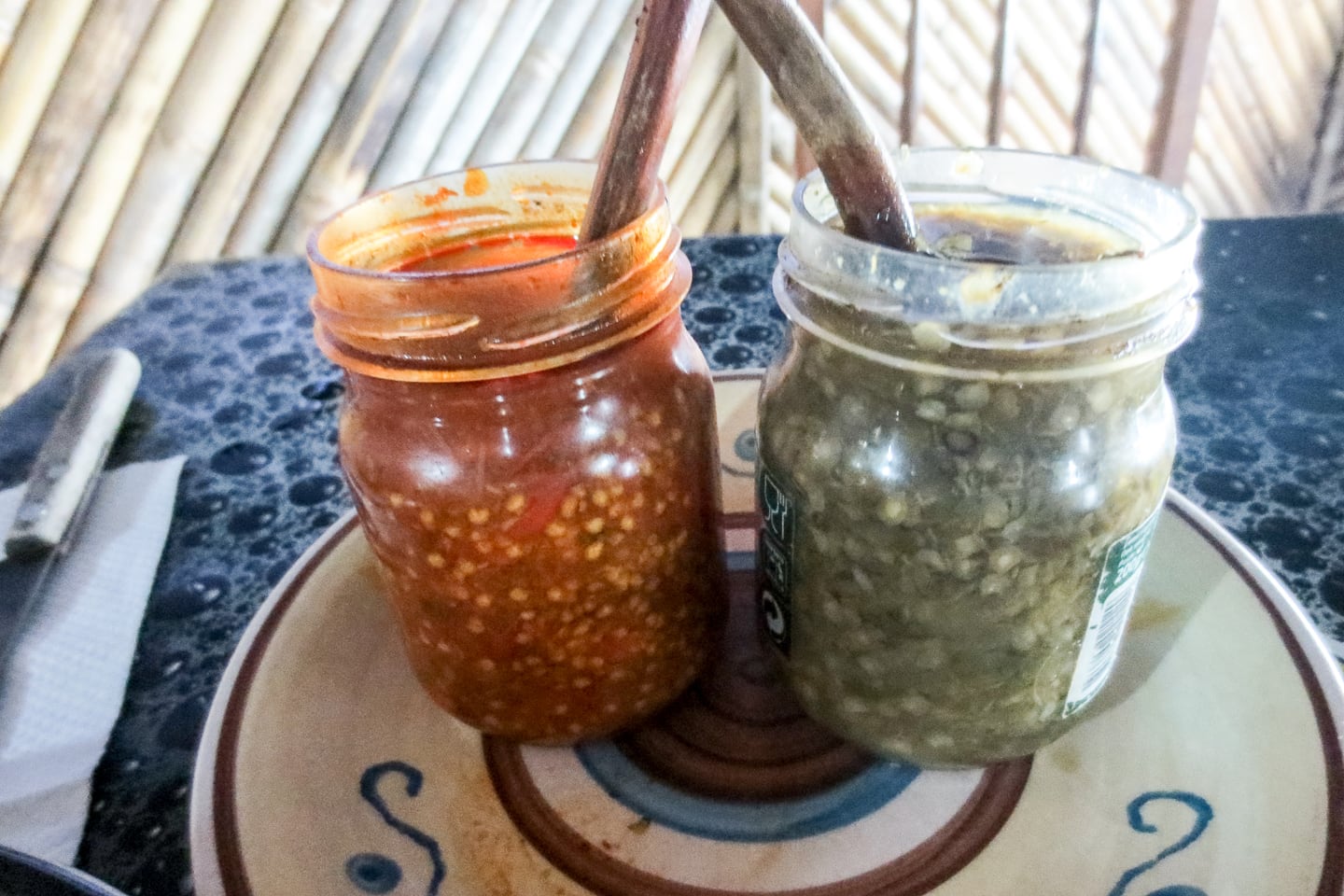
When we finally made the long and arduous journey back uphill with our packs to the center of town, we found Residencial Lys (on Rua 1 de Maio, two blocks east of Av. Eduardo Mondlane) and checked in. Out of what we believe to be something of an act of generosity (we hope), the owner of our previous two nights’ lodging had deposited us in the old part of town, a few miles away from the budget options. He, himself, did not seem keen on the hotels in the city center, but when we arrived at Residencial Lys, it was along the lines of what we had been staying in for the past few weeks in Moz — I’m not sure if that says more about us or about him, but I’ll leave it at that.
I suppose most Americans/Europeans might cringe at the dimly-lit halls, mildewy cold-water showers or various insects that visit in the night, but truthfully, Lys was a good value for the region (though still very expensive by developing-world standards). At least 50% of the staff was friendly (a high percentage in Mozambique), the sheets and beds were clean (we had two twins), and the room had AC (a treat!). Plus, “breakfast” was included (and by breakfast, I mean a piece of toast with Nescafe). It wasn’t the nicest place we’ve ever stayed, but certainly far from the worst. And, we had an awesome view (see below).

I regret to inform you, however, that we were not totally faithful to Residencial Lys. We spent four nights in Pemba Town (not including our stay at a beach lodge a few miles down the street), three of which were spent at Lys. At over US$40 a night, Lys was still more than we wanted to be spending in Pemba. We thought we could get a better deal somewhere else, so we packed our stuff up and went down the street to Pensão Baía (also on 1 de Maio, a few blocks west of Av. Eduardo Mondlane), which seemed to meet our basic requirements for shelter (which honestly in Moz are pretty basic), and settled in to our sun-filled room with shared bathroom down the hall.
The bathroom left much to be desired, with it’s rusted out cold-water shower (you could easily put your foot right through the thing if you weren’t careful) and perma-stink. In Mozambique, toilet paper has been a constant struggle (hotels and hostels keep the stuff locked up like booze or guns, and at 25 cents a roll it’s no wonder). For obvious reasons, Lori would be often be the first to notice (guys would only notice the absence of toilet paper one or two times a day…women, a whole other story). We kept a reserve roll, but didn’t much like to dip into the reserve (because it’s 25 cents a roll, y’all!), so we resigned ourselves to hassling the front desk for the rolled-gold more times than we’d like to admit. At least in Mozambique, they actually supply TP (a lot of hotels in Asia did not, which is always a fun discovery at 2am…)
While Pensão Baía was nearly half the price of our room at Lys, by the next morning it was evident that we had made a mistake. Strangely, our remorse had nothing to do with the TP-less, rusted-out, perma-stinky shared toilet, or anything terribly wrong with the accommodations themselves. There was no mosquito net and the netting on the window was a joke, and the room was an oven that even our sad, duct-taped, one-speed floor fan couldn’t adequately address. Over the course of eight or so hours I was systematically abused, assaulted and slowly devoured by every type of flying, biting insect known to man. I couldn’t sleep under the covers because it was just too darn hot…but placing any piece of my skin and flesh outside of the protection of the sheet met with utter agony. By 11pm I was up and slathering my entire body in DEET, to no avail. In all, I may have mustered 2-3 hours of “sleep.” Lori, of course remained unscathed through the entire tortuous feeding frenzy (I’m fairly certain I took both our share of the feeding…you’re welcome, Lori!) She couldn’t possibly have understood the traumatization that led me to decisively assert at first light (with zero input from herself) that we were getting the heck out of there and never, ever coming back.
The folks at Residencial Lys were, of course, quite moved by our return to their fine establishment (and by “moved” I mean that the old guy at the front desk may or may not have looked up from examining his the dirt between his fingernails), but we were definitely happy to be back.
The next two nights were amazingly restful, in case you were wondering.

Pemba is one of those cities that sounds a lot better on paper than in person. I’m not faulting both of our guidebooks for their somewhat rosy account of the place, necessarily — you mention the words “attractive old port,” and, well, certain images come to mind. The crumbling old town of Pemba does not come close to matching these images.
However, there is a good passage in the newest Bradt guide that I absolutely love and agree wholeheartedly with: “[Pemba] emerged from the wars looking less run-down than most other Mozambican towns (though it has arguably made up for this in the meantime).”

A couple little facts about Pemba:

Pemba is the capital of Cabo Delgado province and the northernmost provincial capital in Mozambique.
It is also the most easterly place in the world using Central African Time (the same as Cape Town on the other side of the continent), so the sun rises very early (around 4:15 in summer!).

This building (above) in the old administrative center caught our eye. At one time it looked like it might’ve been something, but now it’s just a crumbling mess — um, I’m confused…are we talking about the building…or Pemba? … or Mozambique, for that matter? — No, really, I love you Mozambique! It’s not you, it’s me. Yep, totally me…
Yep, it’s official. I think we’ve finally reached the time threshold for backpacking through Mozambique and I’m pretty sure our travel insurance does not cover psychiatric evacuation.
(I suppose there’s a reason why Moz only gives visitors 30 days…)

Speaking of insane…we saw this parked (dry-docked? scrapped?) in front of a general store. Sweeeeeet.

Sadly, Agent 007’s hydroawesomemobile was just too far ahead of its time for Moz…about 400 years or so, it seems. As with so many other failed attempts at modernization in Mozambique, we’ll check back in another eight to 400 years to see how things are going…

Admittedly, there are some places in Moz that you don’t want to see changed, like the picturesque macuti(reed and thatch) neighborhood of Paquitequete (pa-KEE-tay’KEH-tay) — just rolls off the tongue, doesn’t it? Once you get past the 100 meter band of trash and sewage encircling the neighborhood (I swear they do this to keep foreigners out), the village is insanely picturesque.

As we hadn’t been invited into the community and weren’t milling about with a local, we refrained from taking many pictures (Mozambicans just really do not like the sight of a camera, particularly the adults — for various reasons which I’ve already talked a lot about and won’t get into it…but it is very different in this respect than most other places we’ve traveled through, and I knew this going into it having lived in Moz as a Peace Corps volunteer for two years…but it was a difficult nugget of truth for Lori to swallow). However, we did manage this photo. the whole place was bathed in this really beautiful evening light and we really couldn’t let the opportunity pass. We didn’t notice the one blond-haired malungo boy (in red) playing football with the other kids until several days after we took the photo. We chuckled at the thought that that could totally be our kid someday…just another afternoon playing with friends in a random shantytown in Northern Mozambique…
And for the record, everyone in the community was very warm and polite to us (we were greeted by men and women, young and old — nearly everywhere we walked — by a smile and a “Salaama/Salaam” (i.e. peace). Never once felt threatened and most people didn’t seem to care much that we were taking a stroll in these here parts, which is always a nice thing in Africa.

Did I mention that Pemba is a big port town? I believe it’s the fourth largest after Nacala, Maputo/Matola and Beira, but you’d never really know it walking around most of the town. Here we are on one of the best natural deep-water ports on the East African coast and the actual port seems almost like an afterthought. Why do they even bother with Pemba anyway? It seems a lot more efficient to send the ships to the sprawling Nacala facilities about a hundred miles to the south. Perhaps it’s to feed all the big, burly expats involved in offshore gas field development (which is THE thang in Northern Mozambique these days and quite possibly the only reason for Pemba’s continued existence…).

Speaking of feeding… if you do ever find yourself in Pemba Town (and I sincerely hope it’s because you’re busy organizing the local community to exploit the hell out of the malungos currently exploiting the hell out of the Mozambican coastline (and the local community)…and NOT because you’re killing time on a budget waiting for a flight out of Mozambique…) … then I suggest you check out Tasca Bar on Av. Eduardo Mondlane.
Tasca’s a lovely little local eatery that grills up a mean piri-piri chicken (along with other local favorites) and is a fun place to go on game night (the local dudes flock to this place when the footy match is on and the place gets pretty nuts … when one of the teams score … which is like every 30 minutes or so … because this is football (soccer), the most exciting sport in the history of sport, of course. Hey, 5 billion people can’t be wrong, right?

And there it is, the beautiful, mouthwatering, piri-piri half chicken, grilled in piri piri sauce (with a teacup full of additional piri piri just in case you’re not already crying your eyes out like an infant. Delicious.)


The first car wash I’ve ever seen in Mozambique, and it’s in the far north. ProntoWash AutoSPA! I’m not really sure how it works, but it looks pretty fantastic!

Four weeks in to Mozambique and Lori is telling me I haven’t been getting enough photos of chapas. So, for all of you out there who have never had the pleasure, this is what a typical chapa looks like (goat-tied-to-the-roof and all). Technically, these vehicles are supposed to seat about 14 passengers, but I’ve counted up to 38 before. Generally, the cobrador (money collector, pictured here) somehow manages to get the sliding door closed with about 30 or less passengers (because over 30 is just CRAZY).

Paquitequete by day at low tide — the fishermen are out helping pull in the net with the latest catch as children search for tiny treasures in the sand and dhows lay beached waiting for the tide to roll back in.



Above is a large chunk of a ship’s engine and/or engine room — apparently the remnants of a large wreck that the sea has mostly devoured.

Just days to go in our Mozambican adventure and Lori desperately wanted to get her hands on some xima(SHEE’ma), a tasteless porridge-like substance of mysterious physical properties made from cornflower boiled for hours in water with salt. Xima is the centerpiece of most Mozambicans diet, but has not been a centerpiece of our own, until tonight!
Due to its prevalence in homes throughout Mozambique, it’s not something you see on restaurant menus much. Mozambicans don’t eat out much as it is, and when they do, something tells me they’re not craving xima (or maybe they are…who knows). Either way, we haven’t seen it on the menu much. I don’t think it was even on the menu at this place. We ordered the special of the day (fejoada, or been stew, another popular plate in Mozambique). The plate came with rice, but we asked the waiter if we could get xima instead. At first he was reluctant, or perhaps thought he had heard incorrectly.
Waiter: Huh? Xima? You mean rice?
NO, XIMA PLEASE.
Waiter: Okaaay.
And that’s the story of Lori’s first xima. And the plate was very good (albeit on the expensive side for beans and xima). I have good memories associated with xima, and think it’s quite good with something saucy (like fejoada or matapa), but would rather not eat it by itself. Let’s just say it’s not that kind of food. But a little bean stew, seasoned with curry and chicken stock (and a dab of piri piri, red or green) makes an awfully tasty meal…

…and oddly, a very happy Lori.





Great Stories, as always, I felt as though I was right there with you !!! Thanks, GM/T
And the adventures just continue!